
The chain catshark or chain dogfish is a small, reticulated catshark that is biofluorescent. The species is common in the Northwest Atlantic, Gulf of Mexico, and Caribbean. It is harmless and rarely encountered by humans. It has very similar reproductive traits to the small-spotted catshark.

The redspotted catshark, also known as the Chilean catshark, is a species of catshark commonly found in the coastal waters of the southeastern Pacific, from central Peru to southern Chile. They are typically found in the rocky sublittoral areas at the edge of the continental shelf, in waters down to 100 m in depth. They spend the spring, summer, and fall in rocky subtidal areas, but winter in deeper offshore waters due to the strong currents at that time of year.

The brown catshark is commonly found in the Pacific Ocean, ranging from the northern Pacific waters off the coast of British Columbia and south to the Baja California peninsula in Mexico. They may live as far south as Ecuador and Peru. Brown catsharks are deep-water sharks that live on the outer continental shelf and the upper slope. They have been known to live at depths ranging from 30 to 650 m and live on the bottom, usually in muddy or sandy areas. The brown catshark, when originally described, was called Catulus brunneus.
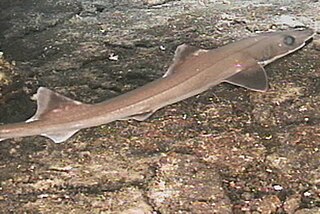
The slender smooth-hound or gollumshark is a species of ground shark in the family Pseudotriakidae. It is endemic to the waters around New Zealand, where it is usually found close to the bottom over the continental slope at depths of 300–600 m (980–1,970 ft). An extremely slim, plain brownish shark reaching 1.1 m (3.6 ft) in length, the slender smooth-hound can be identified by its broad, flattened head with a long, distinctively bell-shaped snout. Its mouth is angular with short furrows at the corners, and contains a very high number of tooth rows in both jaws. Its two dorsal fins are roughly equal in size.

The harlequin catshark is a species of finback catshark, part of the family Proscylliidae, and the only member of the genus Ctenacis. This shark is found in the western Indian Ocean off the coast of Somalia, at depths between 70 and 170 m. The 46 cm holotype was the only specimen that was ever found.

The Cuban ribbontail catshark, is a finback catshark of the family Proscylliidae, found off western central Atlantic Ocean at depths of between 430 and 613 m. It can grow up to a length of 34 cm.

The pygmy ribbontail catshark is a species of finback catshark, family Proscylliidae, distributed patchily in the western Indo-Pacific from Tanzania to the Philippines. It occurs around the edges of continental and insular shelves at a depth of 71–766 m (233–2,513 ft), typically on or near mud bottoms. One of the smallest living shark species, the pygmy ribbontail catshark grows to a maximum known length of 24 cm (9.4 in). It has a slender body with a low, ribbon-like tail fin, and is dark brown in color with blackish dorsal fin markings and tail bands. This shark feeds mainly on bony fishes, followed by crustaceans and then squid. It is aplacental viviparous with females bearing litters of 1–2 relatively large pups. It is of minimal significance to fisheries, being caught as bycatch in some areas.

The African ribbontail catshark, Eridacnis sinuans, is a finback catshark of the family Proscylliidae, found in the western Indian Ocean, from Tanzania, South Africa, and Mozambique, at depths between 180 and 480 m. It can grow up to a length of 37 cm.
The spotted smooth dogfish is a finback catshark of the family Proscylliidae, found in the temperate northwest Pacific Ocean, in the Okinawa Trough. Little else is known about this harmless oviparous species.
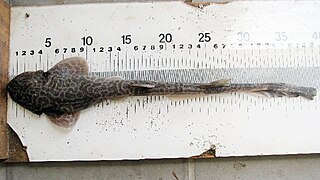
The Izak catshark or simply Izak is a species of shark belonging to the family Pentanchidae, the deepwater catsharks. This species is common off the coasts of South Africa and southern Namibia. It typically inhabits the outer continental shelf at depths of 100–300 m (330–980 ft), with the males found deeper than the females and juveniles. The Izak catshark has a short, wide, flattened head and a robust body tapering to a long, slender tail. It can be identified by its ornate color pattern of dark brown spots or reticulations and blotches on a light yellowish background, as well as by the enlarged dermal denticles over its pectoral fins and along its dorsal midline from the snout to the second dorsal fin. This species reaches 69 cm (27 in) in length, with the males larger than females.

The narrowtail catshark is a catshark of the family Scyliorhinidae, found off the coasts of Honduras and Nicaragua, between latitudes 18° N and 10° N, at depths between 190 and 410 m. It can grow up to a length of 35 cm (14 in). The reproduction of this catshark is oviparous.

The dwarf catshark is a catshark, belonging to the family Scyliorhinidae. It is found off the coast of southern Florida, the Bahamas, and Cuba and is also known as the whitespotted catshark and Cuban catshark.

The quagga catshark is a species of shark belonging to the family Pentanchidae, the deepwater catsharks. A small, slim-bodied shark reaching 37 cm (15 in) in length, it has a distinctive color pattern of narrow, dark brown vertical bars, which resemble those of the quagga. Its head is short and flattened, with a pointed snout tip that is not upturned.

The whitesaddled catshark is a species of catshark, and part of the family Scyliorhinidae. It is found on the upper continental slope of the western central Atlantic Ocean, off the coasts of Honduras, Panama and Colombia, between latitudes 22° N and 9° N, at depths between 274 and 457 m. It can grow to a length of 47 cm (19 in). The reproduction of this catshark is oviparous but otherwise, little is known about its biology.

The boa catshark is a catshark of the family Scyliorhinidae. It is found on the continental shelves and insular slopes of the Caribbean Sea and the Gulf of Mexico, between latitudes 20° N and 9° N, at depths between 330 and 675 m. It can grow up to a length of 54 cm. The reproduction of this catshark is oviparous.
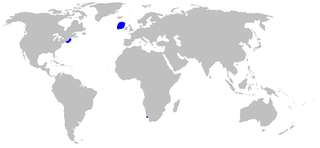
The ghost catshark is a species of shark belonging to the family Pentanchidae, the deepwater catsharks. This species is found on the continental slopes in the northwest Atlantic off Massachusetts, the northeast Atlantic from the Porcupine Bank west of Ireland and the southern Atlantic off Cape Town, at depths between 600 and 1,900 metres.

The dwarf lanternshark is a species of dogfish shark in the family Etmopteridae and is the smallest shark in the world, reaching a maximum known length of 20 cm (8 in). It is known to be present only on the upper continental slopes off Colombia and Venezuela, at a depth of 283–439 m (928–1,440 ft). This species can be identified by its small size at maturity, long flattened head, and pattern of black ventral markings and a mid-dorsal line. Like other members of its genus, it is capable of producing light from a distinctive array of photophores. Reproduction is aplacental viviparous, with females gestating two or three young at a time. The dwarf lanternshark is not significant to commercial fisheries, but could be threatened by mortality from bycatch; the degree of impact from human activities on its population is unknown.
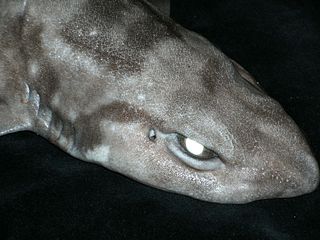
Scyliorhinus meadi, the blotched catshark, is a little-known species of catshark, and part of the family Scyliorhinidae, found in the western central Atlantic Ocean. It inhabits banks of deep-sea coral at depths of 329–548 m (1,079–1,798 ft), feeding on cephalopods, shrimp, and bony fishes. This species can be identified by its wide body and head, and the dark saddle-like markings on its back. It also has small spots that fluoresce yellow under a blue light. Adult blotched catsharks have not been observed; the largest immature specimen is 49 cm (19 in) long. Like other catsharks, it is believed to be oviparous. This species is not dangerous to humans and has no commercial significance.
The genus Eridacnis, the ribbontail catsharks, is a small genus of fin-back catsharks in the family Proscylliidae. It currently consists of the following species:
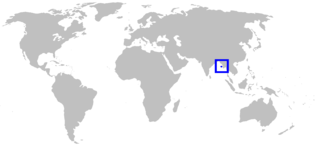
The magnificent catshark or clown catshark is a species of finback catshark, belonging to the family Proscylliidae, known only from five specimens collected in the northern Andaman Sea near the edge of the Myanmar continental shelf. Its common names refer to its distinctive, elaborate color pattern of small and large dark spots, which include "clown faces" beneath each dorsal fin. Reaching 49 cm (19 in) in length, this species has a very slender body with a short, flattened head and a large lobe of skin in front of each nostril. The first dorsal fin is placed behind the pectoral fins but ahead of the pelvic fins.


















